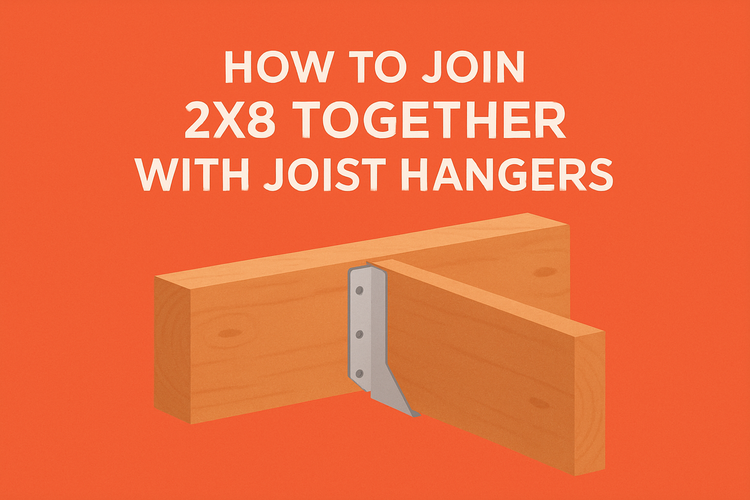How Fix 8 X 2 Join 2x8 Together Joist Hangers

Choosing the Right Joist Hanger for 2x8 Timbers
When joining 8 x 2 timbers together, using the right joist hanger is crucial. The correct type ensures a strong, secure connection that maintains structural integrity.
Joist hangers come in various shapes and load capacities. For 2x8 timber, you'll want to select a hanger that supports dimensional lumber of that size while complying with local building codes. Consider galvanized steel options to resist corrosion, especially if the timber structure is exposed to the elements or used in damp environments. Ensuring the right fit will prevent play or sag in the joined sections.
Installing a joist hanger involves nailing or screwing into both the face-mount and into the side of the receiving joist. Use approved fixings only, such as nails or structural screws designed for joist hangers—these should never be substituted with generic fasteners. Find durable hanger options in the Joist Hangers collection for your specific timber requirements.
Preparing the Timbers Before Joining
Proper preparation of the 8 x 2 timbers ensures a snug and aligned connection. Minor mistakes in alignment or cutting now can affect the durability and stability of the entire structure.
Begin by inspecting the timber for warping, knots, or other damage that might interfere with the strength of the joint. Square off the cut ends using a circular saw or a miter saw. Lining up your timbers on a flat surface is essential to ensure they’re level and flush. Mark reference lines where the connection will take place and double-check measurements before fasteners are applied.
Additionally, use a carpenter’s square or framing square to ensure the timbers will sit perpendicular to one another if required. If end-to-end joining is needed, it might also be appropriate to use a face-mount connector or additional structural support. Reinforcing the joint with Angle Brackets may also increase rigidity when attaching load-bearing beams.
Installing the Joist Hangers Securely
Correct installation of joist hangers is the key to a strong connection between your 2x8 timbers. Failing to secure them properly can compromise the integrity of your entire structure.
Begin by positioning the joist hanger at the end of one of the 8 x 2 timbers. Use temporary support or clamps to hold it in place. Then, fasten it using approved structural nails or screws. Most hangers will have a guide for where the fixings need to go—be sure to follow it precisely. Install nails through all available holes in the hanger flange to distribute the load evenly. For environments requiring higher load capacity or where movement is expected, use additional bracing and possibly high-strength anchors.
Once attached, slide the second timber into place within the hanger. Check the alignment before securing it with fasteners on both sides. Verify tightness to avoid gaps and improve load transfer. Refer to options in the Joist Hangers range for products tested for UK load conditions and regulations.
Reinforcing the Joint for Longevity
While joist hangers provide a solid primary connection, reinforcing the joined 2x8s enhances durability over time. This is especially important in settings that experience vibrations or movement.
In addition to using quality hangers, integrate restraints or additional brackets as secondary supports. For instance, Restraint Straps are useful for stabilising jointed timbers horizontally or vertically. These help prevent twisting or sagging, especially in pitched roof applications or suspended floors.
Use angle brackets that provide additional strength at the joint. Pre-drill holes before adding hardware to avoid splitting. Consider using corrosion-resistant fixings if the structure will be exposed outdoors or in potentially damp spaces. Applying wood adhesive rated for structural applications may also improve overall joint rigidity when used with mechanical connectors.
Common Mistakes to Avoid with Joist Hangers
Improper practices during the installation of joist hangers can lead to structural weaknesses. It's essential to avoid these common errors for safe and long-lasting timber joints.
The most frequent mistake is using the wrong size hanger or attaching it with incorrect fasteners. Always use nails or screws designed for joist hangers, not drywall screws or unapproved substitutes. Another common issue is under-fastening—omitting nails where holes are provided reduces the load-bearing performance of the hanger.
Failing to level and align the timbers beforehand can also lead to misalignment. This often results in uneven loading, which can strain the joint over time. For high-wind areas or outdoor applications, considering reinforced options from the Joist Hangers or Restraint Straps collections ensures better structural protection in dynamic environments.
